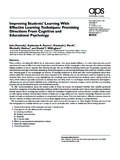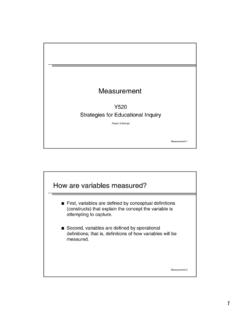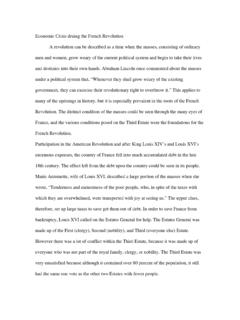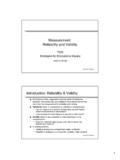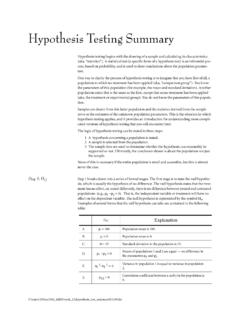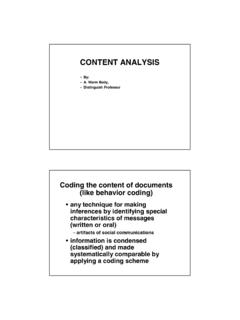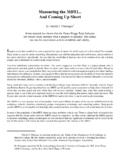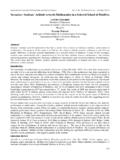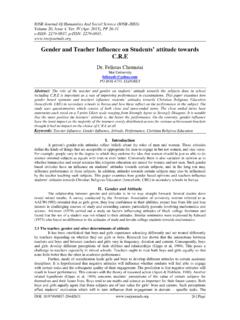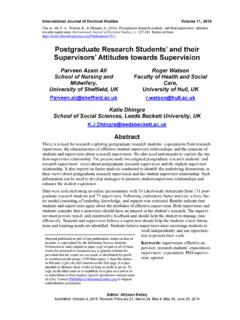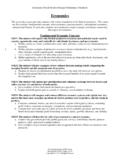Transcription of Attitudes Towards Group Work 1 Running head: …
1 Attitudes Towards Group work 1. Running head: Attitudes Towards Group work . Indiana University Instructional Systems Technology (IST) Graduate Student Attitudes Towards Group work Ray Martinez April, Shen-Yi Cheng Kennon Smith Matt Smith Sangil Yoon Indiana University Attitudes Towards Group work 2. Introduction Groups .. hold the key to solving such societal problems as racism, sexism, and international conflict. Because groups are the building blocks of society any attempt to change society will succeed only if the groups within that society change (Forsyth, 1999, p. xi).. Madness is the exception in individuals but the rule in groups (Nietzsche, quoted in Forsyth, 1999, p. 28).. These two quotes illustrate a range of viewpoints regarding the potential that groups have for both benefit and harm.
2 Each of us, perhaps without often consciously realizing it, belongs to many different groups. These groups might be formed within the context of family, work , school, church, or any of a number of other social settings (Nelson, 1999). In modern society, groups are an integral part of daily life. In addition to the many formal and informal groups to which we belong (and often take for granted), business organizations are increasingly recognizing the benefits that can be accrued through Group work , and are consciously organizing work teams for the express purpose of tackling specific projects. Studies have indicated that as many as half of all employees in the United States belong to at least one Group at their work , and that as many as 80% of the largest organizations in the country use teams to complete work (Forsyth, 1999).
3 This emphasis on teamwork in large organizations has created a need within these companies to seek out individuals who have the skills and Attitudes conducive to effective Group work (Gardner & Korth, 1998). It has been suggested that one way to prepare future employees for such a work environment is by having them work in groups in academic settings (Thomas, 2001). Group work is believed to be beneficial not only in a work environment, but also to have many positive results in academic settings (Davis, 1993). Past research has emphasized that Group work allows students to explore a diversity of opinions, better retain learned information, and efficiently tackle projects too large to effectively handle on an individual basis (Gatfield, 1999). Other research suggests that in certain situations, Group work is linked to an increase in students' confidence levels (DePree, 1998; Thomas, 2001).
4 In response to the growing demand for graduates who can effectively work in teams, and in light of research that suggests educational benefits resulting from Group work , many educational institutions are shifting from traditional teaching methods which have often relied exclusively on individual work , to methods which integrate Group academic work . For example, college programs as diverse as educational counseling (Anderson & Price, 2001) and business (Gardner & Korth, 1998) are exploring the potential benefits that their students might receive through participation in groups. It has come to the point, as noted by Houldsworth & Mathews (2000), that it is quite uncommon for a student receiving an undergraduate degree to not have worked in an academic Group at some point in his or her education.
5 Attitudes Towards Group work 3. With this proliferation of Group work in schools there has been a great deal of research regarding the beneficial impacts of groups on learning. As suggested above, many of these studies have suggested that there are significant beneficial results in Group work (see Davis, 1993). However, comparatively speaking, there has been less research conducted to investigate the Attitudes and perceptions of students with regards to Group work . Literature Review Despite the benefits that research suggests can be accrued through academic Group work , it is reasonable to expect that there would be some diversity of opinion among students regarding the requirement that they participate in groups to complete academic work . For example, in a recent article concerning academic Group work , the author noted that it is common for students to not enjoy Group work (Butts, 2000).
6 This leads a potential instructor to a certain dilemma: If Group work is demonstrated to have highly beneficial results, it would seem wise to incorporate Group work into the curriculum. However, if students routinely dislike Group work , and if these negative Attitudes are linked to a diminished effectiveness of such groups, the instructor might be understandably reluctant to use Group work . If we hope to improve student Attitudes toward Group work , it is important to first explore the issues that might influence such Attitudes . This information might then be used to address student concerns and to explore possible techniques for improving students' Attitudes and groups' effectiveness. Recent research regarding student Attitudes Towards Group work suggests that these Attitudes might be influenced by a number of factors.
7 Roughly speaking, these factors could be divided into two broad categories: first, those characteristics which are unique to the individuals which comprise the Group ( , gender, or education level), and second, those characteristics which belong to the Group as a unit ( , the interpersonal relationships that develop over time within the Group , and the division of labor). There have recently been a number of studies that have investigated the potential links between individual student characteristics and Attitudes Towards Group work . For example, Gatfield (1999) sought to better understand the diversity of opinions regarding Group work by investigating whether or not Attitudes vary systematically with such characteristics as age, gender, and ethnicity. He found that ethnicity (Australian vs.)
8 International) seemed to be linked to significant differences in attitude, but that factors such as age and gender were not. In a similar spirit, Gardner & Korth (1998) sought to understand if Attitudes toward Group work varied according to individual learning style preference. They found that there were a large number of statistically significant differences; in other words, student Attitudes about Group work and preferred instructional methods seemed to vary systematically with their individual learning style. Attitudes Towards Group work 4. Other studies, although they do not specifically emphasize student Attitudes , contribute to this research because they explore a number of conditions that are thought to influence the effectiveness of Group work . Some of this research has examined Group composition in an effort to understand the Group as a unit.
9 For example, Houldsworth &. Mathews (2000) found that heterogeneous groups (those having a diversity in gender, age, and experience) performed more consistently than homogenous groups (those in which the members were more similar to one another). On a similar topic, but perhaps suggesting a different conclusion, VanOffenbeek (2001) was not able to find a significant correlation between team performance and the degree of diversity of opinion (regarding the task to be completed) among Group members. Based on the assumption that student attitude toward Group work may be linked to the degree to which students feel that their efforts are effective and lead to desired results, the study below will investigate issues pertaining to the diversity of Group composition. Another significant issue pertaining to a Group is the interpersonal interactions that develop among its members.
10 These interactions are important in the way that the tasks are divided among individuals in the Group . While individual projects are usually the sole responsibility of one person (and the consequences of the project are directly linked to that individual), Group projects are the joint responsibility of several individuals (and the consequences of the quality of the project are thus suffered or enjoyed by all). The nature of team work can lead to increased effectiveness and more creative solutions, but the unique conditions imposed by such work can also be conducive to negative, undesirable consequences. Phenomena such as social loafing (where a student limits his or her efforts) and the sucker effect (where a student pulls back from contributing because he or she feels taken advantage of) can influence the effectiveness and quality of a Group 's work (Houldsworth & Mathews, 2000).
